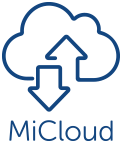By Rikus Jansen, Head of EOH Voice and Unified Communications
Time and time again we hear the same refrain: technology is the great enabler. Theoretically, at least, this is true, to the extent that innovative programmers and solutions architects are usually able to create technology that meets specific custom purposes.
The emergence of several powerful new technologies and models over the last few years has heightened the sense that technology has reached the point where it can provide virtually exponential improvements for organisations.
Yet when we look closer at so many of these technology implementations, we find that not only are organisations not reaping the promised benefits – the technology is actually hampering users, driving productivity in the opposite direction to what was expected.
The gap between what is available and what is used
By examining the ways that companies are using these technologies, we might conclude that these technologies have been hugely over-specified and over-engineered. Why? Because users typically only utilise a fraction of a system’s full capabilities.
Part of the reason for this is a lack of training. More accurately, a lack of appropriate training. The problem tends to start right at the beginning, when users are being shown how to use the system. Due to all manner of pressures, they are usually only shown what they need to know to do their immediate work. As a result they remain unaware of other functionality that could also make them more productive.
The second big cause of the gap between capabilities and actual usage is user-friendliness – or, rather, a lack of it. This has been the thorn in the side of digital application adoption for decades – from the earliest intranets that no one used, to the very latest unified communications systems that aren’t delivering anything near their full potential.
The scourge of shadow IT
What often follows when users are given a system with a user experience that doesn’t match what they need to work, is that they either resort to their own “home-made” solutions, or have their departments develop substitute solutions. Probably the most common example of this is employees preferring to use customised spreadsheets to enter data, rather than the “official” application, because they are more familiar with the former.
Allowed to continue, this shadow IT system eventually reaches a point where the IT department has such diminished insight into and control over the real business systems that people are using, that it is completely hamstrung in carrying out its mandate within the organisation.
The answer is user experience control
It’s pretty clear that, despite the best attentions of very smart usability experts, a certain portion of an application will forever be doomed to lie unused. This implies that we need to solve the problem in a different way to the current approach that attempts to predict and pre-tailor the user experience.
What’s necessary is a user interface that the user can completely control. The user experience and how it is implemented should lie totally in the hands of each individual user, to create not only a customisable experience, but a more intuitive one too.
MiCloud takes exactly this approach, offering unified communications, IP telephony and IP-PBX solutions that users can tailor to suit the ways in which they work. This is what gives us an edge, and ensures that our applications are used to the fullest potential possible in practice.
Rikus Jansen is a Unified Communications specialist. He entered the South African technology space in the late 1980s, pioneering 3D animation and video effects in the broadcasting industry. This led to a career in corporate ICT outsourcing. He co-founded Ensync Voice Solutions, a unified communications company. After merging the Ensync companies with the JSE-listed ICT provider, EOH, he now heads up the EOH Voice and Unified Communications business, which is one of the leading communication providers in South Africa.











